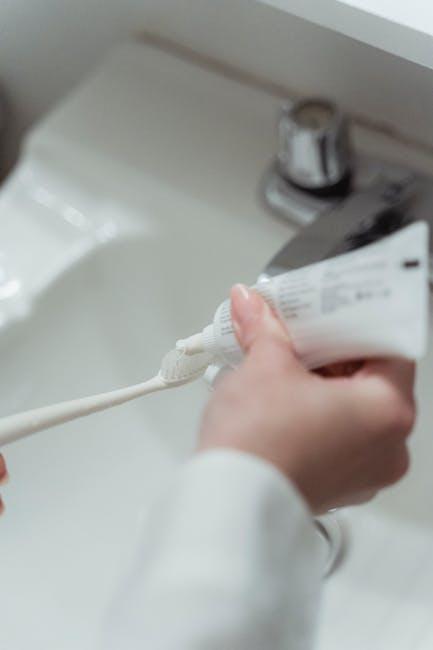
Fluoride Ban Could Create Cavities For 1 Of Every 3 U.S. Kids – U.S. News & World Report
Fluoride has been a cornerstone of dental health in the United States for decades. Its proven benefits in reducing cavities have made fluoridated water a vital public health measure. However, recent discussions around a fluoride ban in some regions have raised concerns among experts and parents alike. According to reports from U.S. News & World Report, banning fluoride could lead to cavities in 1 out of every 3 U.S. children, dramatically impacting oral health nationwide.
Understanding the Role of Fluoride in Dental Health
Fluoride is a naturally occurring mineral that helps strengthen tooth enamel and prevent decay. It works by:
- Remineralizing enamel and reversing early decay
- Inhibiting the growth of harmful oral bacteria
- Making teeth more resistant to acid attacks from plaque and sugar
For over 75 years, community water fluoridation has been recognized as one of the most effective and equitable ways to combat dental caries, especially for children lacking access to regular dental care.
The Consequences of a Fluoride Ban: What the Data Shows
Recent analysis from U.S. health authorities and dental professionals underscore the potential risks of removing fluoride from public water supplies:
| Impact | Potential Outcome |
|---|---|
| Cavity Rate Increase | Up to 33% more children affected |
| Dental Treatment Costs | Significant rise in pediatric dental bills |
| Oral Health Disparities | Worsening gap among underprivileged groups |
The National Institute of Dental and Craniofacial Research (NIDCR) estimates that water fluoridation prevents nearly 25% of tooth decay in children and adults. Removing fluoride could reverse years of progress, especially in communities with limited access to oral healthcare.
Why Are Some Advocating for a Fluoride Ban?
Despite widespread endorsement by scientific and medical organizations, fluoride remains controversial in some circles. Common concerns include:
- Health Risks: Claims linking fluoride to various ailments lack strong scientific validation at community-fluoride levels.
- Ethical Considerations: Some argue forced fluoridation infringes on individual rights and consent.
- Environmental Impact: Fear of fluoride accumulation in ecosystems, though studies show minimal ecological risks at typical doses.
Public debates continue, but the consensus among dentists and public health experts remains strongly in favor of fluoridation due to its substantial dental benefits.
Benefits of Fluoride for Children’s Oral Health
Water fluoridation is particularly beneficial for children, who face the highest risk of developing cavities. Benefits include:
- Reduced Tooth Decay: Fluoride strengthens enamel and combats decay caused by sugary diets prevalent among kids.
- Accessible Prevention: It provides passive protection without requiring active behavior changes.
- Cost-Effective: Helps lower dental care costs for families and the healthcare system.
Comparing Fluoride Status and Cavity Rates in U.S. Kids
| Group | Fluoridated Water Access | Cavity Prevalence |
|---|---|---|
| Children with Fluoride | Yes | ~20% |
| Children without Fluoride | No | ~33% |
Practical Tips to Support Children’s Dental Health Amid Fluoride Concerns
If your community is facing changes in fluoride policy, here’s how parents can protect their children’s teeth:
- Maintain Good Oral Hygiene: Brushing twice daily with fluoride toothpaste is essential.
- Limit Sugary Snacks and Drinks: Reducing sugar intake lowers cavity risk dramatically.
- Regular Dental Checkups: Early detection and treatment can prevent severe decay.
- Consider Fluoride Supplements: Talk to your pediatric dentist or doctor about fluoride vitamins or rinses.
- Encourage Water Consumption: Drinking plenty of water helps wash away plaque and maintain oral hygiene.
Case Study: Impact of Fluoride Removal in Communities
One notable case occurred in Portland, Oregon, where fluoride was removed from the water supply in 2013. A follow-up study revealed:
- A significant increase in childhood cavities within two years.
- Higher dental emergency visits among young children lacking fluoridation.
- Increased costs for dental treatments in families with limited resources.
This case exemplifies the tangible consequences of fluoride removal, reinforcing experts’ warnings outlined in the U.S. News & World Report findings.
Firsthand Experience: A Parent’s Perspective
Jessica, a mother of two from Ohio, shares her story:
“When our town debated removing fluoride, I was worried. My younger son has sensitive teeth, and without fluoride in water, his cavities noticeably worsened. We now spend more on dental work and have had to be more vigilant with at-home care. Fluoride really does make a difference.”
Conclusion: Protecting U.S. Kids from Cavities Requires Advocacy and Action
A fluoride ban could create widespread dental health challenges for American children, putting 1 in 3 at increased risk for cavities. The data is clear: fluoride’s benefits are scientifically supported, cost-effective, and crucial in reducing oral health disparities.
Whether through maintaining community water fluoridation or adopting fluoride-based dental products and supplements, proactive efforts are vital. Parents, healthcare providers, and policymakers must collaborate to safeguard children’s smiles and overall health.
Stay informed, support science-based dental health policies, and practice good oral hygiene habits to keep your family cavity-free – fluoride plays a key role in that success.


